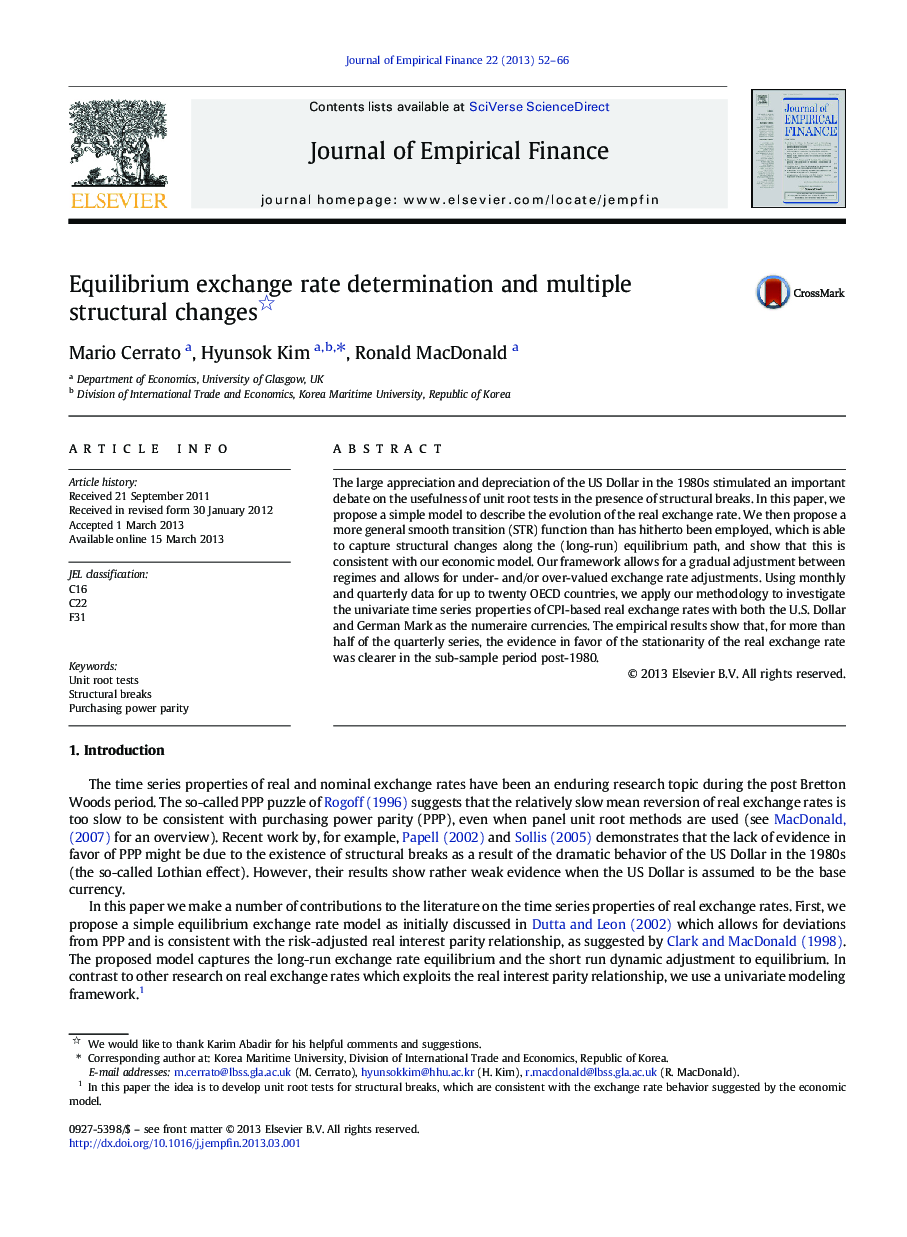| Article ID | Journal | Published Year | Pages | File Type |
|---|---|---|---|---|
| 958426 | Journal of Empirical Finance | 2013 | 15 Pages |
•We propose a simple model to describe the evolution of the real exchange rate.•We also propose a more general smooth transition (STR) function consistent with our model.•Monthly and quarterly data for up to twenty OECD countries are used.•The real exchange rate is stationary especially in the period post 1980.
The large appreciation and depreciation of the US Dollar in the 1980s stimulated an important debate on the usefulness of unit root tests in the presence of structural breaks. In this paper, we propose a simple model to describe the evolution of the real exchange rate. We then propose a more general smooth transition (STR) function than has hitherto been employed, which is able to capture structural changes along the (long-run) equilibrium path, and show that this is consistent with our economic model. Our framework allows for a gradual adjustment between regimes and allows for under- and/or over-valued exchange rate adjustments. Using monthly and quarterly data for up to twenty OECD countries, we apply our methodology to investigate the univariate time series properties of CPI-based real exchange rates with both the U.S. Dollar and German Mark as the numeraire currencies. The empirical results show that, for more than half of the quarterly series, the evidence in favor of the stationarity of the real exchange rate was clearer in the sub-sample period post-1980.
